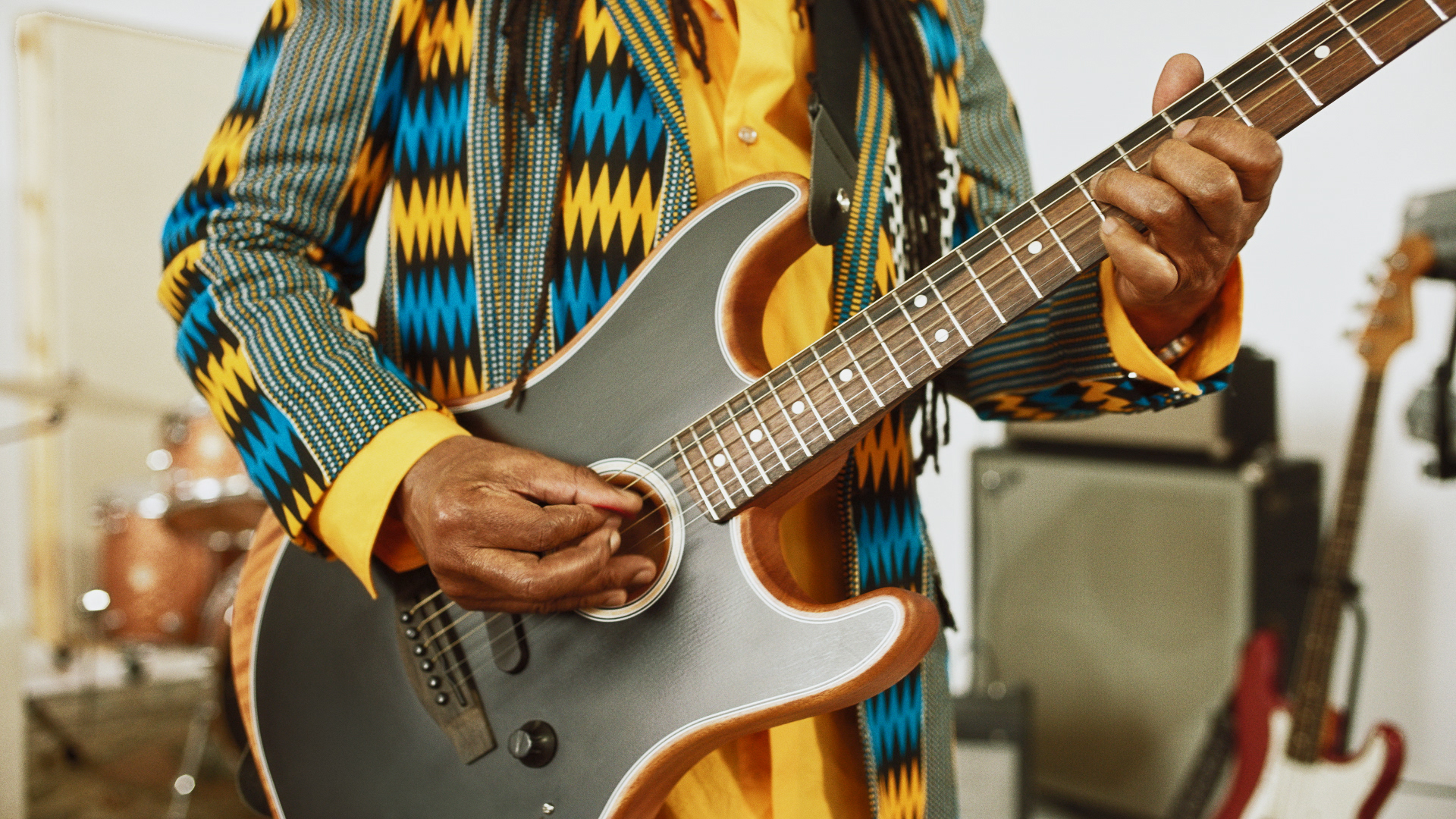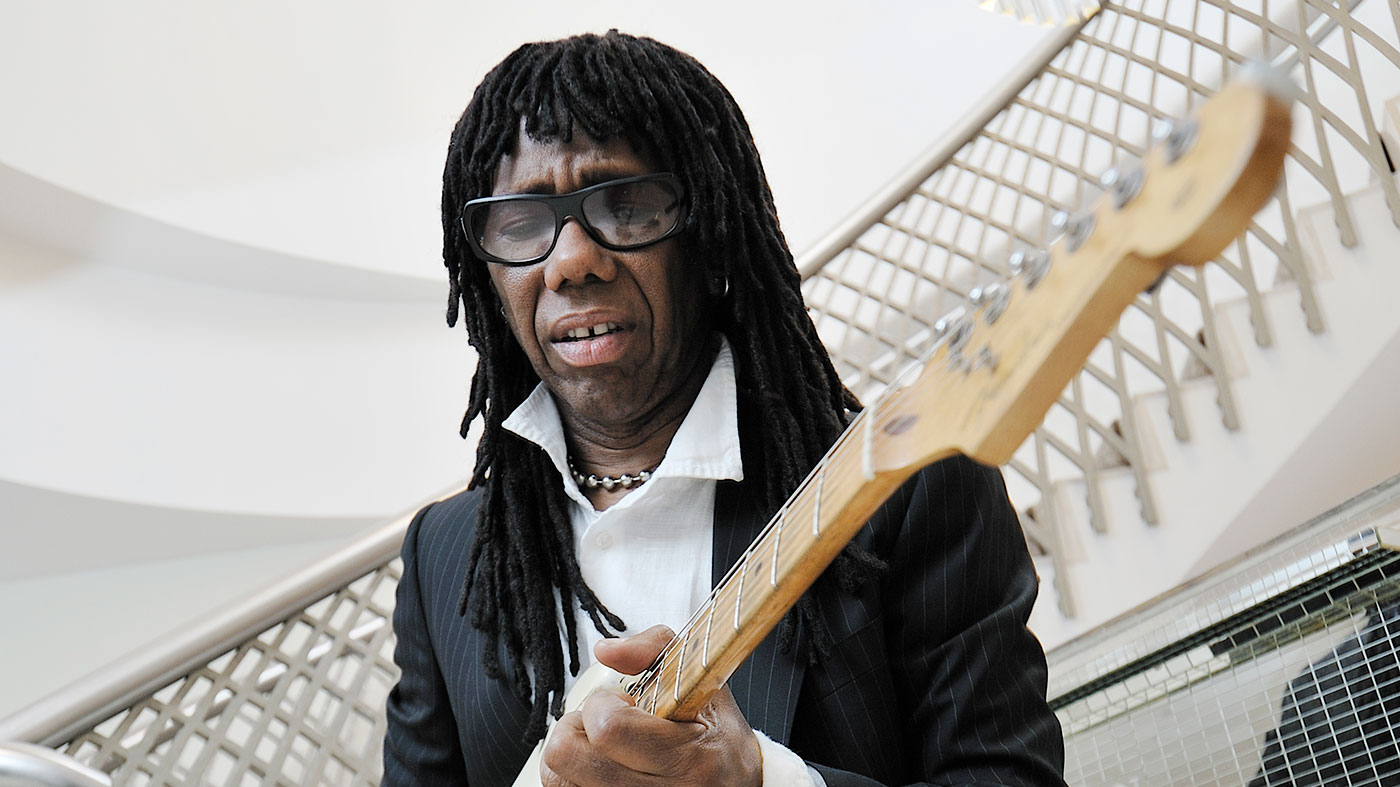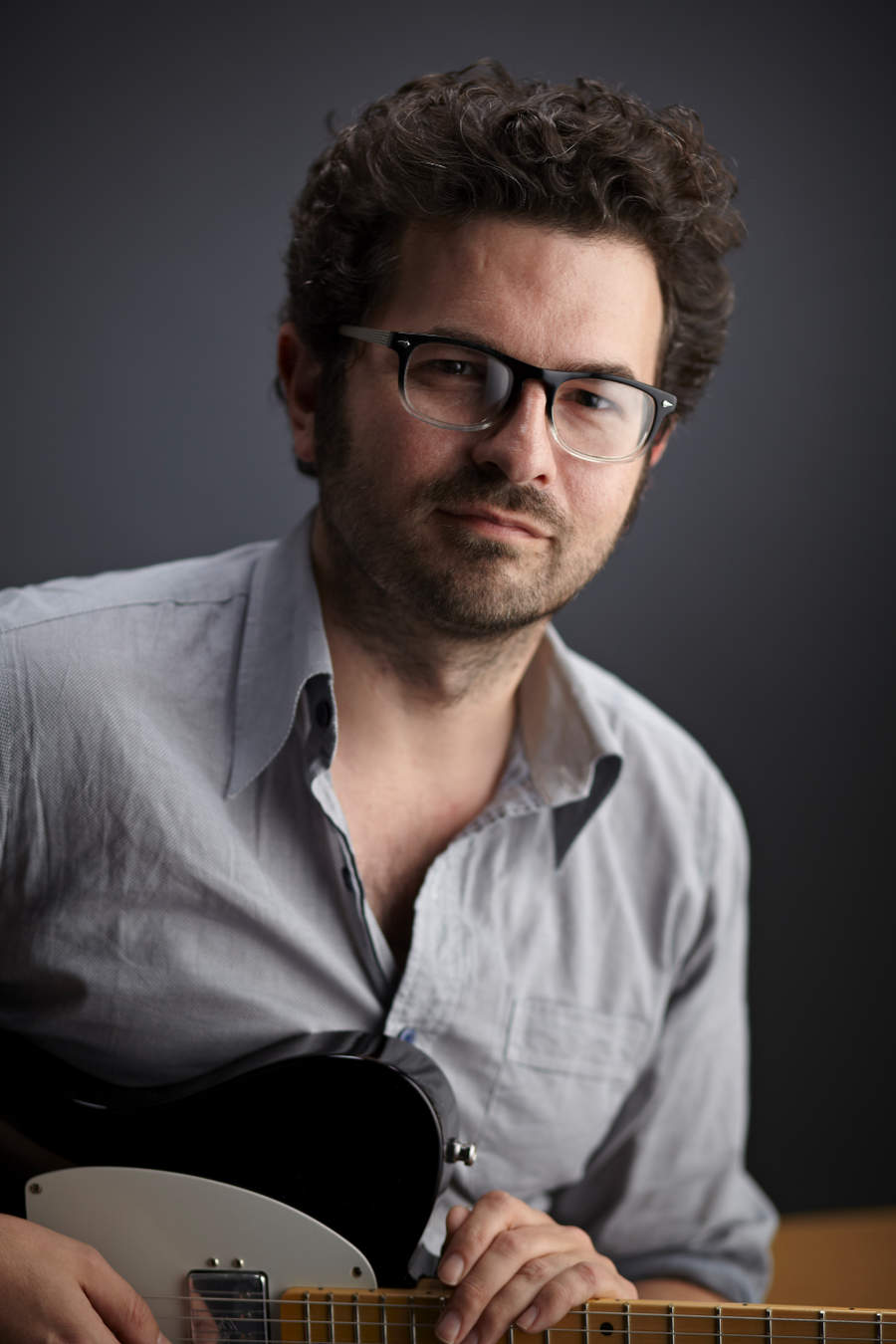“Bernard Edwards gave me the dirtiest look...” Nile Rodgers talks Strats with us
Interview: the Chic legend reveals that being upstaged by a ‘kid’ was the reason he first picked up a Fender Stratocaster
Nile Rodgers has taken the Fender Strat a long way – in his hands timeless music has been created with the 1960s model he accurately dubbed the 'Hitmaker', whether in Chic, with Daft Punk, Madonna, David Bowie, Duran Duran and many more.
But now Nile is branching out with a new kind of Strat, an instrument that's another interesting development for electric guitar as a whole, as we found out when we caught up with him lately…
"Having this guitar and starting to play jazz on it, I was like ‘Oh wow, it’s doing what I like jazz guitars to do’"
You’ve just filmed a video for Fender in which you’re playing the new Acoustasonic Stratocaster. It’s quite a departure from the ‘Hitmaker’ Strat you’re known for using. What attracted you to it?
“They gave it to me over at Abbey Road and I was just putting the guitar through its paces. And the next thing you know I wound up doing session after session after session – just over and over and over again, trying to figure out what the guitar did.
"And as I did it I wound up having so much fun playing it that I just didn’t stop playing it – it was a weird thing. So it sort of grew on me almost right away...I really love jazz guitars, I just can’t help it. When I’m sitting at home and I practice, I’m playing a D’Aquisto or a D’Angelico or an L5 – and typically I have the L5 in my bedroom, because it’s just right there and the other ones have to go to my locker.
“But by having this guitar and starting to play jazz on it, I was like ‘Oh wow, it’s doing what I like jazz guitars to do.’ I can hear it in the room but when I amplify it, it’s got the same kind of vibe – I can manipulate it and I can do what I can do with an L5.
"And, just think, I haven’t had to put flat-wound strings on it: I’m still using the acoustic guitar strings that came on the guitar. I haven’t changed them since I got it – some people laugh but old-school guitarists keep their strings on their guitars for a really long time. It’s just a thing...I don’t know if it’s an R&B thing or a blues thing or a black thing or whatever...but it’s just something that we do.
Want all the hottest music and gear news, reviews, deals, features and more, direct to your inbox? Sign up here.
My guitar techs know that I’m gonna have an attitude if I say, ‘Did you change my strings last night?’ and they say ‘Er, yeah, man, we changed them before the last show….’. It’s just a thing, man, and I can’t explain it but I like old guitar strings.”

"I needed to have a guitar that satisfied composers and producers and artists"
Which jazz guitarists influenced your own style the most?
“I started out really, really loving Wes Montgomery and then for a bit I started to go into the Django Reinhardt school – I really got into the gypsy jazz thing. But then practical life tends to take over and I realised that my life was going to be, for a certain amount of time, playing other people’s music.
"That was going to be my job – I was not going to play my own music, I was going to play other people’s music. So I needed to have a guitar that satisfied composers and producers and artists. So I started playing different styles of hollowbody guitar. And eventually I worked my way to a 335 and then that just didn’t quite feel right to me and I went back to the other big box guitars.”
Bernard kept telling me, ‘Buy a Strat, buy a Strat...it’ll change our whole sound"
Why did you make the switch to becoming a Strat player?
“We were opening for the Jackson 5 on the first leg of their first world tour in 1973 and we were substituting for a really great R&B band called The O'Jays, and the O'Jays whenever they had a headlining gig they didn’t want to open for the Jacksons. So they would turn it over to my band and we were a group called New York City – we had a hit record called I’m Doin’ Fine Now – so we had that record and we toured on that record for about two or three years.
"So one day we were doing a gig that we were headlining and we had an opening act and it was a young kid – we didn’t want to have a stage changeover because we weren’t that big – so we would just let the opening act use our gear. And so this young kid plugged into my amp – and at that time I was playing through an Acoustic amp [a 70s amp brand, not an acoustic-specific amp] with the horn in it, because we all wanted to look like Sly and the Family Stone. But it was stupid because I was playing a jazz guitar that would feedback and I’d have to put tape over the f-holes...but still, you wanted to look like Sly, so...Anyway, this young kid plugged into my amp and he was playing a Fender Stratocaster and he was smoking! [laughs]
“It sounded unbelievable to me – and I’ll never forget this, man, my partner at the time Bernard Edwards he gave me the dirtiest look...if looks could kill, I would be dead years ago and I would not be talking to you. Because all along Bernard kept telling me, ‘Buy a Strat, buy a Strat...it’ll change our whole sound, it’s going be so funky. The way you play jazz, if you do that on a Strat, man, you’re going to be killing, you’re going to be known for something.’
"So that day I went out and I traded my Gibson Barney Kessell for the cheapest Strat I could find… That guitar has now become the Hitmaker"

“He kept trying to talk me into it but I was a hippy, so I was like ‘No, man, I just want to play like Wes...’ But this kid, he was playing some of the songs that we were playing, because we were doing cover songs as well as a few originals, but he would do the cover and he would sound exactly like the dude on the record and I was like ‘Whoah!’.
"So that day I went out and I traded my Gibson Barney Kessell for the cheapest Strat I could find because I was not convinced. So there was this really cheap guitar and I think it was going for about $149. At that time, Strats with maple necks had become expensive because of Hendrix. So typically in those days if you bought a Strat, especially if it had some age on it, it would be around $300 which was a lot of money. But with this one I traded in my Barney Kessell and the dude gave me $300 back! I was like ‘Oh, man – this really was a cheap guitar.” That guitar has now become the Hitmaker, I play it on damn near every record and it was the runt of the litter. And it sounds amazing – it’s the only Strat I know that sounds like that.”
[Given that the Hitmaker is estimated to have been used to make $2bn worth of music, Nile got a one billion, three hundred and forty-two million, two hundred eighty-one thousand, seven hundred and seventy-nine percent return on his $149 investment…]
What musical uses do you think you will put the new Acoustasonic Strat to?
“I really think it’s going to wind up being my jazz guitar. Because it’s right next to my bed, it’s in the bed with me at night, and I’ll probably play jazz on it – it feels like a jazz guitar to me, it doesn’t feel like a dreadnought or something to me. So I think it’s going to wind up being that for me.”
To stay updated on Nile Rodgers, visit nilerodgers.com and for more information on the Fender Acoustasonic Strat visit fender.com
Jamie Dickson is Editor-in-Chief of Guitarist magazine, Britain's best-selling and longest-running monthly for guitar players. He started his career at the Daily Telegraph in London, where his first assignment was interviewing blue-eyed soul legend Robert Palmer, going on to become a full-time author on music, writing for benchmark references such as 1001 Albums You Must Hear Before You Die and Dorling Kindersley's How To Play Guitar Step By Step. He joined Guitarist in 2011 and since then it has been his privilege to interview everyone from B.B. King to St. Vincent for Guitarist's readers, while sharing insights into scores of historic guitars, from Rory Gallagher's '61 Strat to the first Martin D-28 ever made.
